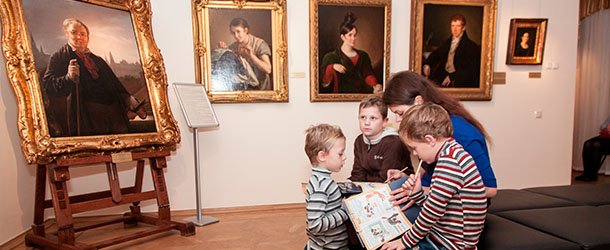Visiting a museum is a great way for families to spend time together. There’s so much to see, do, and talk about!
Bring kids to museums to open their eyes to new and different ideas and perspectives that help them connect, reflect, relate, and create. Whether it’s a local outing, a special destination, or a stop on your vacation itinerary, make the most of your trip to the museum with some planning, preparation, and follow-up fun.
Planning your visit
Do some research.
Check the museum website to find out if there are free family admission days or free or reduced admission for kids. Look for other programs and resources available just for families, such as special programs or exhibits, art workshops, family rooms, or kid-friendly brochures.
Get your kids to help plan.
Share information with kids about what’s at the museum, and talk about what they might want to see. Look online for exhibits most likely to appeal to their interests.
Read books.
Get kids excited about their visit to the museum and the kinds of art they will see by sharing books! Dr. Seuss’s Horse Museum is a good introduction to a variety of different artists and artistic styles, and offers suggestions for new ways to look at art. You can also check your local library for books to read before your visit, or look for articles and videos online that introduce kids to the art they will see.
Before you go
Pack a bag.
Check the rules ahead of time about what you can bring into the museum. If photography is allowed, bring a digital device for kids to use to take pictures. Take a notebook or sketchbook and pencils for kids to draw and take notes on what they see. You might also want to bring some of the books you read to make connections to what kids see or to take a reading break.
Explain the rules.
Make sure that kids understand the rules of the museum. Most objects in art museums can’t be touched, and it is important for kids to know that they need to be careful and respectful around irreplaceable works of art: no running, no eating or drinking, and no touching.
Eat before you go.
It is hard to focus when bellies rumble! Having a meal or snack ahead of time can also lessen the immediate lure of the snack bar or museum café.
During your visit
Get oriented.
Make the information desk your first stop. Pick up a map and exhibit brochures and learn where the bathrooms and any special places for families are located in relation to the exhibits kids are interested in seeing.
Look around.
Encourage kids to ask questions and talk about the art they see and how it affects them. Ask them open-ended questions and have them describe what they see. Share your opinions, and read to them from brochures and displays. Use the questions in this brochure to help kids explore their thoughts and feelings.
Explore.
You don’t have to see everything in the museum—or even everything you planned to see. Let kids set the pace. If they need help focusing, try a game of I Spy, or use your museum brochure to come up with a scavenger hunt. And if they’ve found something they really like looking at, give them the camera or a sketchbook and pencils to let them record their impressions.
Follow-up fun
Compare notes.
Having a meaningful discussion about what kids observed gets them thinking and making connections to the world. Focus on the museum exhibits, but also talk about the experience—the people at the museum, the building itself, and the time spent together.
Get creative.
Some kids may be inspired by their visit to paint or sculpt. Others may be curious to learn even more about the artists or their subjects. Provide resources and opportunities for kids to follow sparks of interest.
Bring it back to books.
Art shares powerful stories and voices. Write and illustrate stories with your child inspired by works of art they found meaningful. Get started by looking at kids’ photographs and drawings or the museum brochures. Ask them to describe what is happening in the artwork, then build your story as kids connect thoughts, words, and images. Have them put their stories, along with other mementos of your museum visit, into their art journal or into a scrapbook that everyone can enjoy.
Not near a museum?
Many museums have interactive tours of many of their art exhibits for you and your child to view online.
